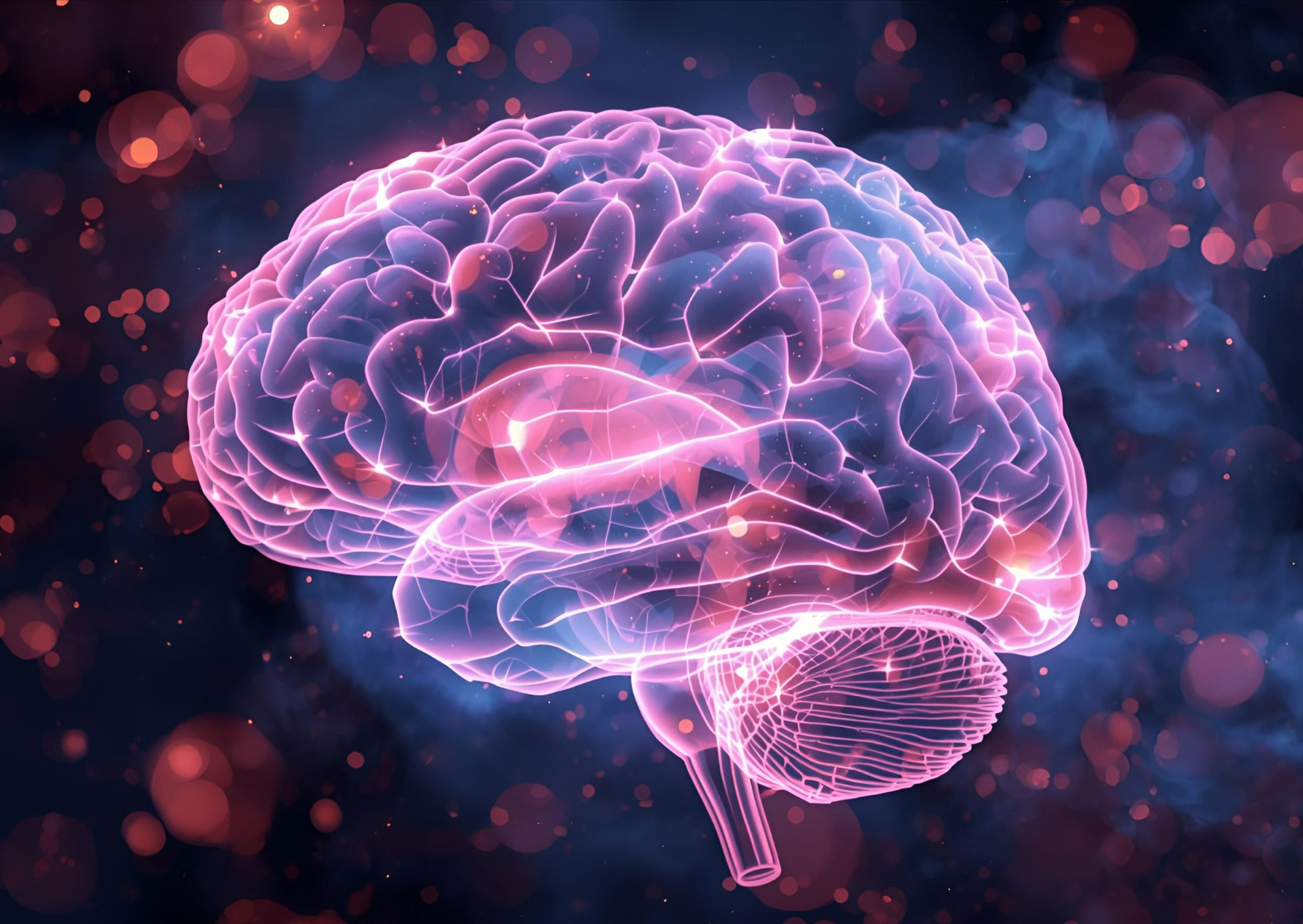Published on October 4, 2025
What really happens in our brain when we sleep? Why do we spend several hours each night in a state that strangely resembles madness? What if our dreams, far from being mere nocturnal wanderings, played an essential therapeutic role? Recent discoveries in sleep neuroscience are transforming our understanding of this mysterious activity that occupies nearly a third of our existence.
When Sleep Resembles a Psychotic State
In a remarkable appearance on Andrew Huberman's podcast, Dr. Matt Walker advances a fascinating hypothesis: every night, we collectively experience a state that resembles psychosis(1). This bold comparison is based on five symptoms that we all experience while dreaming:
First, we hallucinate by seeing images that don't exist. Second, we firmly believe in completely impossible events, fueling total delusion. Third, we lose our spatial and temporal bearings, unable to correctly identify the time, place, or even the identity of the people around us. Fourth, our emotions fluctuate extremely, a phenomenon that psychiatrists call affective lability. Finally, upon waking, we almost entirely erase this experience from our memory, victims of a form of amnesia.
Dr. Walker ironically points out that if we were to exhibit even one of these symptoms during the day, we would immediately seek psychological or psychiatric help.
What Exactly Is a Dream?
A dream corresponds to any mental activity reported during sleep. It is during the REM (Rapid Eye Movement) phase that we are most likely to dream and have lucid dreams. This phase is subdivided into two states: phasic REM sleep, where the eyes move actively, and tonic REM sleep, where they remain still. When the eyes are in motion, the probability of remembering a dream reaches 95 to 100%.
An evolutionary perspective sheds light on the human sleep peculiarities. Charles Nunn, a primate specialist, discovered that primates spend about 9% of their total sleep in the REM phase, compared to 20% for humans. This major difference can be explained by survival imperatives: during REM sleep, the body completely relaxes, which could prove fatal for a bird perched on a branch or a primate in a tree.
The Neurological Mechanisms of Dreams
During the REM phase, the prefrontal cortex exhibits activity similar to that of wakefulness, even though we are not conscious. A particularly intriguing phenomenon characterizes this phase: PGO (Ponto-Géniculo-Occipital) waves.
These very brief electrical discharges travel through three main areas of the brain:
- The Pons (P), a structure in the brainstem
- The Lateral Geniculate Nucleus (G), part of the thalamus involved in vision
- The Occipital Cortex (O), region processing visual information
These waves follow a precise path from the pons to the thalamus and then to the occipital cortex, creating the neurological conditions for dreaming.
The Therapeutic Functions of Dreams
The REM phase serves two essential functions for our psychological balance. First, it stimulates creativity and facilitates problem-solving. Second, it ensures emotional equilibrium, acting as a true nocturnal therapy.
An experiment conducted on individuals suffering from depression remarkably illustrates this therapeutic power: those who had dreamed about the causes of their depression during REM sleep showed better chances of recovery than those who had not.
Dreams related to our daily lives generally reveal our concerns, emotional burdens, and the people with whom we have formed deep emotional bonds.
Freud's Controversial Legacy
It's impossible to discuss dreams without mentioning Freud and his Interpretation of Dreams. Although widely criticized and considered unscientific, this work remains the historical reference in the field. According to Freud, dreams should not be interpreted but deconstructed to extract meaning. However, the only person truly capable of understanding our dreams remains ourselves.
Nightmares and Lucid Dreams
Nightmares can become pathological when they occur at least once a week. One therapeutic approach involves working with a professional to rewrite the nightmare's script and transform it into a beneficial experience.
Lucid dreams represent this fascinating ability to become aware that one is dreaming and to take control of the dream. For scientists, the objective proof of lucid dreaming relies on tracking eye movements: although the body is paralyzed during sleep, the eyes remain active and can serve as a Morse code between the sleeper and the observer.
However, it's important to note that some people practicing lucid dreaming wake up feeling unrested, as this activity requires as much energy as the waking state. To induce a lucid dream, a simple technique involves repeating to oneself before sleep: "I will remember that I am dreaming" or "I will control my dreams." This repetition, which may seem absurd, leverages the brain's natural functioning, particularly receptive to information received just before falling asleep.
When Dreams Are Forgotten
Not remembering one's dreams should not be a cause for concern. When we dream, our brain encodes these experiences into our memory, but this does not guarantee that these memories will be accessible upon waking. Sometimes, the dream is indeed stored, simply out of reach of our consciousness.
Supplements to Improve Sleep
Among the recommended supplements for promoting quality sleep are magnesium, apigenin (derived from chamomile), and theanine. Theanine is particularly effective for individuals suffering from anxiety, although it also increases the likelihood of experiencing lucid dreams.
Final Thoughts
Dreams remain one of the most fascinating and mysterious human experiences. Every night, we plunge into a parallel universe where the laws of logic fade, our emotions are unleashed, and our brain performs essential therapeutic work. Far from being a mere nocturnal diversion, dreaming actively contributes to our psychological balance, creativity, and emotional well-being.
Whether we remember our dreams or not, whether they are ordinary or lucid, peaceful or nightmarish, they constitute an irreplaceable part of our mental life. So the next time you wake up with a vague memory of an improbable dream adventure, remember that your brain has just completed its own nocturnal therapy session. And perhaps that is the greatest mystery of sleep: we heal while we sleep.
Support independent research
Every contribution helps maintain this ad-free project. (Direct alternative if having trouble with the coffee button)
By Dounia Boukrim


